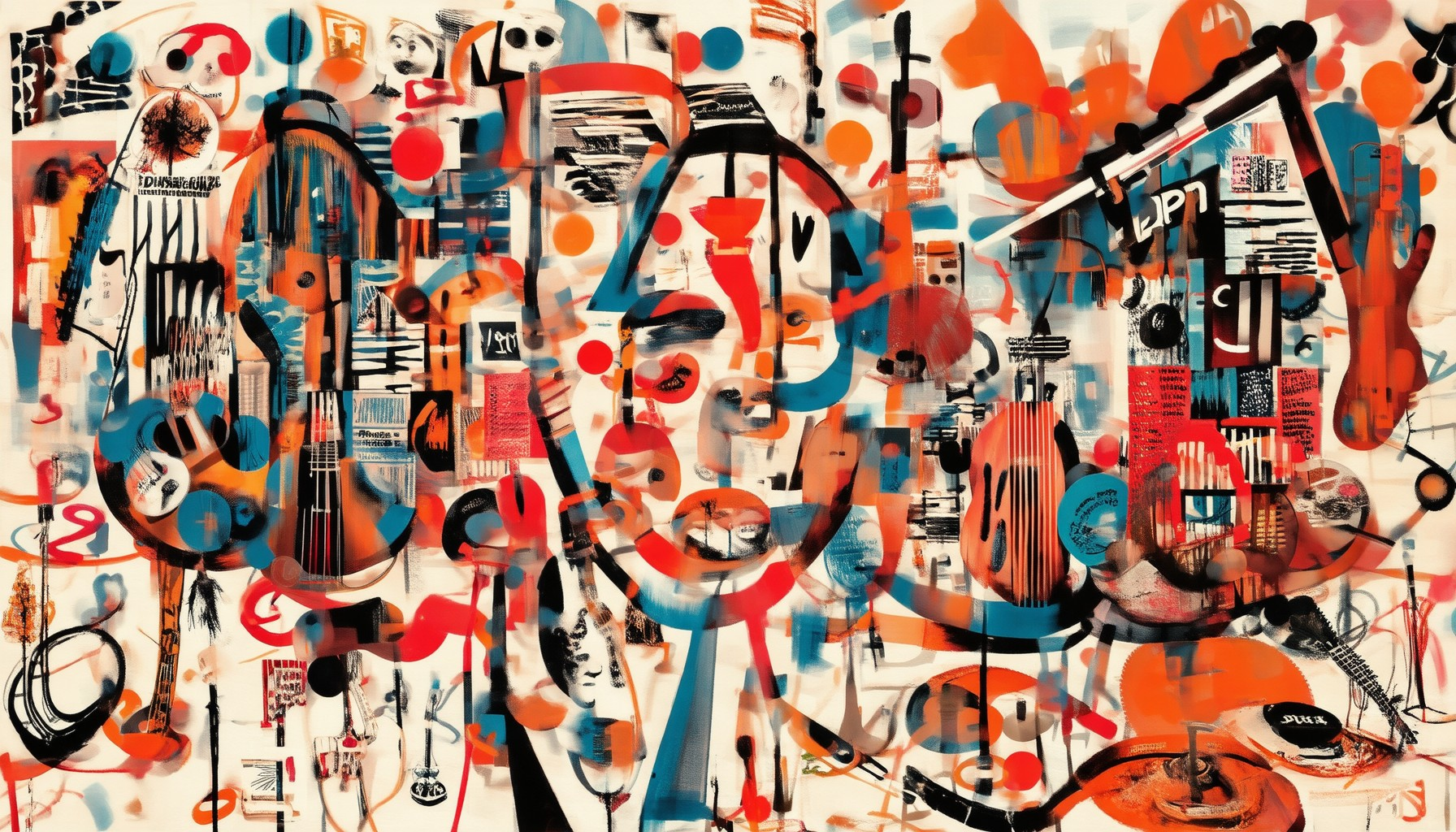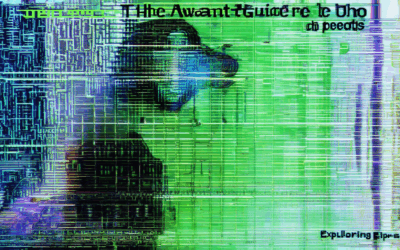Avant-garde music culture has long been a driving force behind innovation in the world of music, challenging traditional norms and pushing boundaries to create unique auditory experiences. Defined by its experimental approaches, this cultural movement has redefined music across various genres, blending unconventional techniques with artistic vision. From its origins in the early 20th century to its global influence today, avant-garde music culture has left an indelible mark on modern music. In this article, we delve into the core concepts, influential figures, and diverse expressions of avant-garde music culture, exploring its definition, key approaches, and its profound impact on music and society. Whether you’re a seasoned music enthusiast or new to the genre, this exploration will provide a comprehensive overview of one of the most dynamic and transformative cultural movements in history.
Key Takeaways
- Avant-Garde Music Culture is defined by experimental and boundary-pushing audio exploration.
- John Cage emerges as a pivotal figure in avant-garde music, known for groundbreaking compositions.
- The movement spans various disciplines, influencing art, literature, and performance.
- Avant-garde music challenges traditional norms through experimentation and innovative techniques.
- Historical movements like Dada and Neoburlesque highlight its lasting cultural impact.

What is Avant-Garde Culture?
Avant-garde culture refers to a style or movement that is characterized by its innovative, experimental, and boundary-pushing nature. It represents a departure from conventional thinking and often challenges traditional norms in various fields such as art, music, literature, and fashion. The term “avant-garde” originally emerged in the 19th century to describe forward-thinking approaches in fine arts but has since expanded to encompass a wide range of creative endeavors.
Historical Context
The concept of avant-garde began to take shape during the late 18th and early 19th centuries, particularly in Europe. Artists and thinkers like Jean-Auguste-Dominique Ingres, Eugène Delacroix, and Frédéric Chopin explored new ways of expressing themselves, laying the groundwork for what would become the avant-garde movements of the 20th century. These early experiments in innovation set the stage for the development of movements such as Impressionism, Symbolism, and Cubism.
Key Movements
- Modernism : A major advocate of avant-garde culture, Modernism emerged in the early 20th century and sought to break free from traditional artistic conventions. Artists like Pablo Picasso, Marcel Duchamp, and Henry Matisse were instrumental in redefining art through new perspectives and techniques.
- Surrealism : Co-founded by André Breton in 1924, Surrealism emphasized the exploration of the subconscious mind and the irrational. This movement encouraged artists to embrace dream-like imagery and unexpected combinations of objects and concepts.
- Abstract Expressionism : Dominating the art world in the 1940s and 1950s, this movement prioritized emotional expression over representational accuracy. Jackson Pollock and Mark Rothko are among the most celebrated figures associated with this era.
- Beat Generation : While primarily known for its literary and musical contributions, the Beat Generation also aligned with avant-garde ideals through its rejection of mainstream values and embrace of experimental forms.
Influence on Contemporary Culture
Avant-garde culture has had a profound impact on contemporary society. It has influenced fashion, with designers like Yves Saint Laurent and Rei Kawakubo pushing boundaries through their innovative designs. In music, genres like experimental hip-hop and ambient electronica draw inspiration from avant-garde principles, blending unconventional sounds and structures.
Modern Relevance
Today, avant-garde culture continues to evolve, embracing digital media and technology. Artists and creators use platforms like YouTube and Instagram to share their work, reaching global audiences. This democratization of creativity has allowed avant-garde ideas to thrive in new ways, often blurring the lines between art, fashion, and technology.
By embracing the spirit of innovation and challenging established norms, avant-garde culture remains a vital force in shaping our understanding of art and human expression.
What is the Avant-Garde Approach to Music?
The avant-garde approach to music represents a bold and innovative direction in the realm of sound exploration. This genre challenges traditional musical norms, embracing experimentation and uniqueness to create groundbreaking compositions. Below are key aspects of this approach:
- Defining Avant-Garde Music
- Avant-garde music is characterized by its forward-thinking nature, often pushing boundaries in composition, instrumentation, and sound design.
- It frequently incorporates non-traditional elements such as electronic beats, spoken word, jazz fusion, and modular synthesis.
- The primary goal is to provoke thought and challenge auditory expectations, often alienating audiences in pursuit of artistic expression.
-
Historical Context
- The roots of avant-garde music trace back to early 20th-century movements, influencing artists like John Cage and Karlheinz Stockhausen who redefined musical boundaries.
- Experimental noise music and tape manipulation further expanded the genre’s scope during the 60s and 70s.
-
Key Characteristics
-
- Use of unconventional instruments and sounds
- Abstract and non-linear structures
- Emphasis on texture and timbre over melodic simplicity
- Integration of multimedia elements
-
Notable Artists and Works
-
- John Cage: Known for his minimalist works like “Silence” and use of chance operations.
- Karlheinz Stockhausen: Pioneered serialism and electronic music.
- Susie Ibarra: A contemporary artist blending Latin rhythms with avant-garde techniques.
- Ornette Coleman: Influential jazz musician known for his harmolodic approach.
-
Influence on Genres
- Avant-garde principles have significantly shaped various music genres, including:
- Experimental hip-hop
- Progressive rock
- Electronic music
- Free jazz
-
Engaging with Avant-Garde Music
-
- Listen to albums by pioneering artists to understand the genre’s diversity.
- Explore festivals and events dedicated to experimental music.
- Study theoretical frameworks surrounding sound art and composition.
By embracing the avant-garde approach, musicians and listeners alike push creative boundaries, fostering innovation in the ever-evolving landscape of music. This genre continues to inspire new sounds and challenge conventions, ensuring its legacy as a cornerstone of modern musical exploration.

What Are the 4 Types of Avant-Garde Music?
Here are the four primary types of avant-garde music, each representing distinct approaches to pushing musical boundaries:
- Electronic Music
- Characterized by the use of electronic instruments and technology to manipulate and create new sounds.
- Pioneered by artists like Kraftwerk , this genre often blends experimental textures with rhythmic patterns.
- Known for live performances utilizing synthesizers, drum machines, and other electronic gadgets.
-
Chance Music
- Involves elements of chance and unpredictability in composition or performance.
- Associated with John Cage , who famously incorporated dice rolls and other random elements into his works.
- Emphasizes the role of chance in creating unique and non-repetitive musical experiences.
-
Futurist Music
- Draws inspiration from Futurism, focusing on themes of progress, technology, and innovation.
- Composers like Francis Dhomel explored futuristic concepts through electronic and modular instruments.
- Often blending elements of noise and experimentation to reflect a forward-thinking aesthetic.
-
Minimalist Music
- Features sparse compositions with a focus on simplicity, repetition, and reduction.
- Represented by artists such as Steve Reich and Philip Glass , minimalist music often uses limited harmonic progressions and rhythms.
- Known for its meditative and introspective qualities, it contrasts sharply with more complex forms.
Each of these styles challenges traditional musical conventions, contributing to the diverse landscape of contemporary music. By embracing innovation and breaking barriers, avant-garde musicians continue to redefine what music can be.

What is the Avant-Garde Subculture?
The term “avant-garde” originates from military terminology, referring to the front line of an advancing force. In modern contexts, it describes innovative, experimental movements across fashion, art, culture, and literature. These movements challenge traditional norms, pushing boundaries to explore new creative territories.
The avant-garde is characterized by its forward-thinking approach, often embracing unconventional techniques and perspectives. It thrives on experimentation, blending diverse media and styles to create provocative works that stimulate thought and debate.
Historical Context
Avant-garde movements have deep roots in the early 20th century, particularly in Europe. Artists and thinkers like Marcel Duchamp, Pablo Picasso, and F.T. Marinetti redefined art and culture, advocating for the rejection of traditional standards in favor of innovation.
Key Characteristics
- Experimentation: Constant exploration of new forms, materials, and ideas.
- Challenging Norms: Rejection of established conventions in favor of personal expression.
- Integration of Multiple Disciplines: Blending art, fashion, film, and technology.
- Political and Social Commentary: Addressing contemporary issues through artistic expression.
Influence Across Fields
Avant-garde principles extend beyond visual arts, shaping fashion, music, literature, and design. Movements like Abstract Expressionism in painting and Jazz in music exemplify this cultural evolution.
Modern-Day Avant-Garde
Today, the avant-garde continues to evolve, reflecting global cultural shifts. It remains a dynamic force, influencing everything from streetwear to digital art, while maintaining its core mission of challenging the status quo.
Abstract Hip Hop, for instance, embodies this spirit through its blend of experimental beats and boundary-pushing lyrical content. It serves as a testament to the enduring impact of avant-garde movements in contemporary culture.
Who is the father of avant-garde music?
The father of avant-garde music is often regarded as John Cage . Known for his groundbreaking compositions and experimental approaches, Cage significantly influenced 20th-century musical composition. His works, such as Silence and Music for Piano No. 4 , broke conventional boundaries and paved the way for modern musical exploration. Cage’s innovative spirit and integration of diverse artistic elements made him a pivotal figure in the avant-garde movement.

The Main Idea of Avant-Garde
The avant-garde represents a progressive, cutting-edge movement characterized by its innovative and sometimes radical departure from traditional norms. It encompasses a variety of disciplines, including art, literature, music, theater, and philosophy, fostering the exploration of new ideas and creative expressions.
Characteristics of Avant-Garde
- Innovation: Avant-garde movements are defined by their willingness to challenge established conventions and introduce groundbreaking concepts.
- Experimentation: Artists and thinkers often experiment with new forms, styles, and techniques to push the boundaries of their respective fields.
- Controversy: These movements frequently provoke debate and criticism due to their provocative nature.
- Cultural Impact: Avant-garde ideas often influence broader societal changes and inspire future developments in various industries.
Historical Context
Avant-garde movements have played significant roles in shaping modern culture. From the Dada Movement in the early 20th century to contemporary Neoburlesque , these groups have consistently redefined artistic and intellectual landscapes.
Examples Across Disciplines
Avant-garde manifests differently across disciplines:
- Art: Painters like Marcel Duchamp and sculptors like Alexander Calder pushed visual boundaries.
- Literature: Poets such as T.S. Eliot and novelists like James Joyce revolutionized storytelling forms.
- Music: Musicians like Sun Ra blended jazz, electronic, and experimental elements to create unique soundscapes.
- Performance Art: Artists like Yves Klein explored new ways of presenting art through non-traditional mediums.
Conclusion
Avant-garde is not merely a historical term but a living concept that continues to evolve. It challenges us to think critically, embrace uncertainty, and envision a better future through innovative thinking and bold creativity.





0 Comments